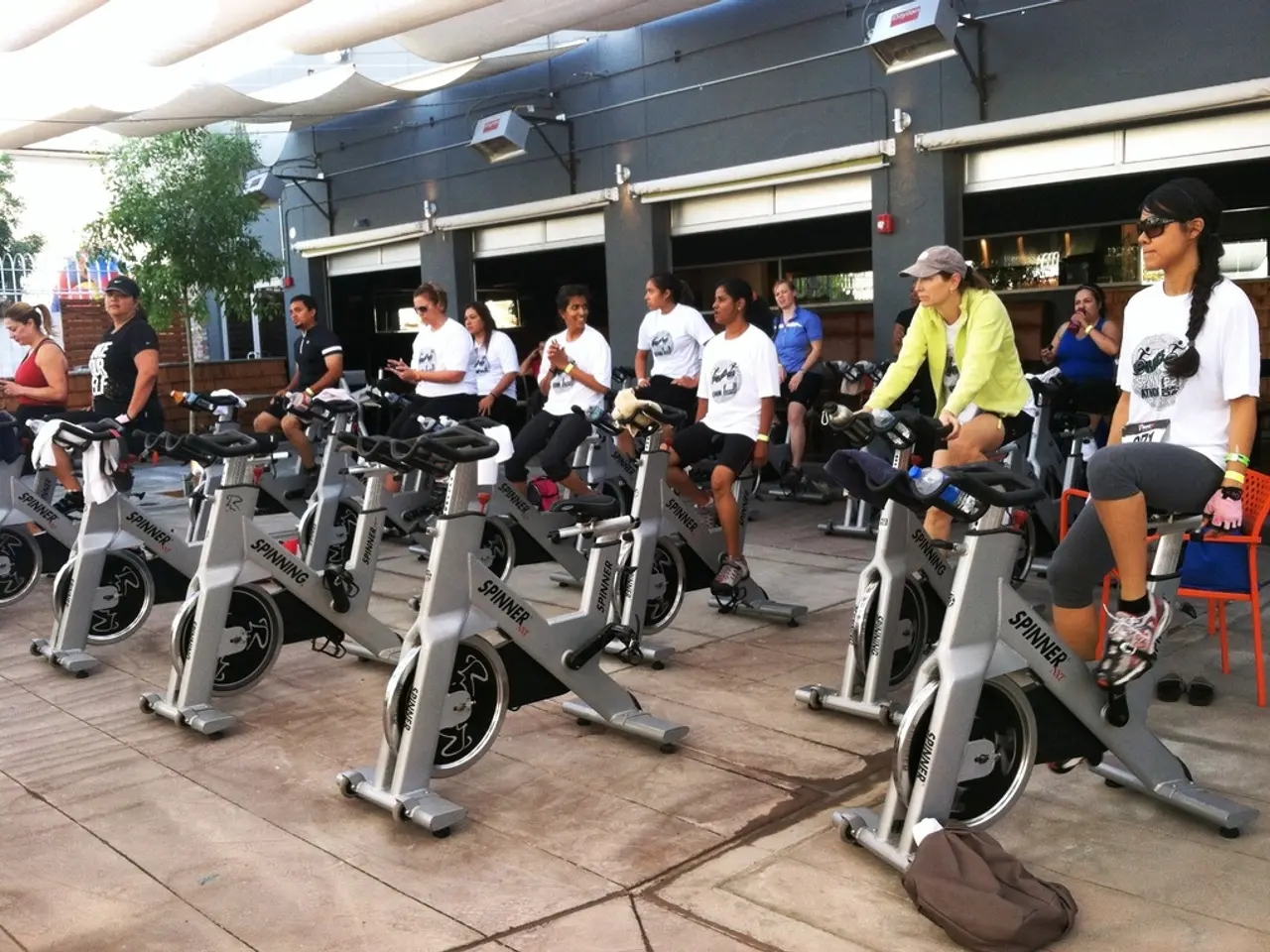Training with osteochondrosis: Pivotal concepts and secure workout routines
In the journey towards maintaining a healthy lifestyle, individuals with osteochondrosis may face unique challenges. This condition, which affects the intervertebral discs and can cause back pain and discomfort, requires a thoughtful approach to exercise.
Recommended exercises typically focus on gentle, controlled movements that improve spine flexibility, posture, and muscle strength without causing strain or impact. Examples include neck mobility exercises using a towel to support controlled neck rotation and restore flexibility without pain or equipment, and slow, controlled spinal movements that avoid sudden twisting or heavy loading, aiming to relieve stiffness and maintain joint health.
However, certain exercises should be avoided. High-impact activities such as running, jumping, or any exercise that places repeated stress on the spine or affected joints should be avoided. Heavy weightlifting or exercises with poor technique that load the spine excessively can exacerbate symptoms. Sudden or forceful twisting, bending, or hyperextension movements of the spine should also be avoided.
Exercises where there are hyper-extensions in the lumbar spine, like standard squats and deadlifts, should be avoided in the first months of workouts with osteochondrosis. Instead, pulling exercises such as upper block pull and horizontal pulls with support on the chest are recommended for back training. These exercises strengthen the back extensors and develop the back muscles without overloading the spine.
When performing a bench press, it is important to place the legs on the bench to avoid arching in the lower back. Exercises on the hyper-extension should be performed with a minimum head tilt to exclude excessive load on the back.
The main goal of workouts with osteochondrosis is to strengthen the muscle corset and improve blood circulation in the back area. A special workout program is needed, focusing on strengthening the back and avoiding excessive loads. Softer and safer exercises with an emphasis on symmetry and low working weights are recommended.
Regular stretching plays a significant role in preventing relapses after a workout, and it's important to stretch the back and perform core-strengthening exercises. Massage helps relieve spasms and keeps the back in good condition.
It is crucial to maintain the correct body position during the performance of exercises. Consulting a healthcare professional or physical therapist to tailor the program to the individual's condition is strongly advised for safety and optimal results. After the pain from osteochondrosis subsides, you can gradually return to more intense workouts, starting with light weights and increasing them cautiously.
In conclusion, for individuals with osteochondrosis, the key is to perform low-impact, mobility-focused exercises slowly and gradually increase intensity, always listening to the body and avoiding pain or discomfort. By following these guidelines, individuals with osteochondrosis can maintain a healthy lifestyle and manage their condition effectively.
Science plays a crucial role in understanding osteochondrosis and developing therapies and treatments that address its unique challenges in health-and-wellness. Mental health, along with physical fitness-and-exercise, is essential in regulating stress, promoting better sleep, and ensuring overall well-being for individuals living with osteochondrosis. Nutrition, specifically a balanced diet that supports joint health and reduces inflammation, plays a significant role in managing symptoms and accelerating recovery. Consulting healthcare professionals or physical therapists is recommended for personalized exercise and nutrition plans, considering the individual's condition and progress.




